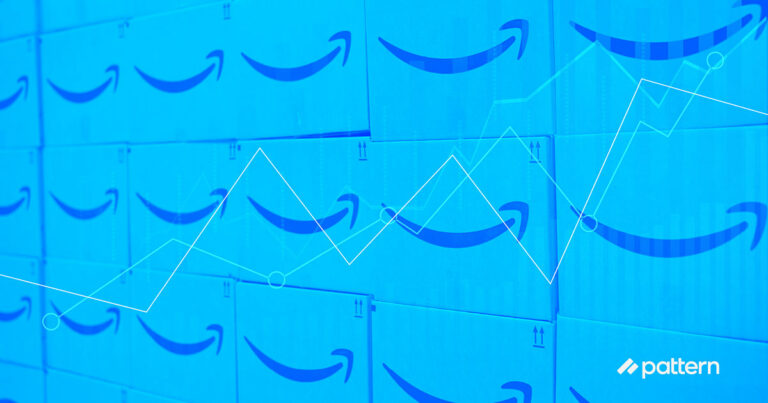The Premier Accelerator for
Global Ecommerce
The Premier
Accelerator for Global
Ecommerce
Pattern® is the first ecommerce accelerator to help your company grow faster, protect your brand, and sell
globally on ecommerce marketplaces, D2C, and other digital channels.
OUR MODEL
Why Brands Work With Pattern
Our biggest differentiator? We buy your inventory and you benefit from our acceleration technology and services at no fee.
We Buy Your Inventory
We Identify Acceleration Gaps
Using our data science foundation and technology, we’ll identify your most urgent ecommerce acceleration gaps. Then, together with our marketplace managers, we’ll make a plan to execute strategies that fill the gaps, unleashing your acceleration potential at global scale.
We Apply Tech & Services
Using our proprietary software and team of marketplace experts, brand managers, digital marketers, and creatives, we’ll optimise your ecommerce business on Amazon and other marketplaces. Finally, you’ll have the bandwidth and the right data to achieve your ecommerce goals.
Your Ecommerce Growth Accelerates
Capitalising on data insights from our technology, we’ll help you accelerate strategies for revenue growth and brand control. You’ll see continued benefits as your product stays in stock, and our marketing strategies and optimisation techniques increase your sales.
We Repeat at Global Scale
Why identify patterns in ecommerce data? To find the winning formula and repeat it across new markets and regions. We’ll work with you to examine global expansion opportunities and the marketplaces we can dominate next.
OUR RESULTS
Pattern Outcomes
Brands experience measurable and repeatable growth when they apply Pattern’s ecommerce
acceleration platform’s technology and services to their ecommerce business and strategy.
Grow Faster
Pattern brands experience an average of 40% revenue growth in their first year and beyond.
67% Revenue Growth in 1st Year
Pattern has given us a road map. They are really a partner. Pattern has truly gone above and beyond to do everything they can to make us successful.

Jinnie Austin
Brand Manager at Feetures
Sell Globally
Our teams across 18 global locations give our partners the local expertise they need to win in new markets.
Entered 7 New Markets
Since Pattern, Thorne has reached thousands of new customers and been able to compete within the cluttered supplement category through advertising.

Touria Carson
Thorne Growth and Digital Marketing Manager
OUR CUSTOMERS
98% Customer Retention
long-lasting partnerships are a testament to our results.
OUR GLOBAL FOOTPRINT
23
Global Locations
9
Global Distribution Centers
1,400
Global Employees
60
Countries Sold In
Explore Our Ecommerce Resource Library
Find relevant content to accelerate your ecommerce business. Stay on top of industry trends and best practices.
Contact Us
Let’s accelerate together. Our marketplace experts will walk you through how our ecommerce acceleration technology and services help you grow faster, protect your brand, and sell globally.


